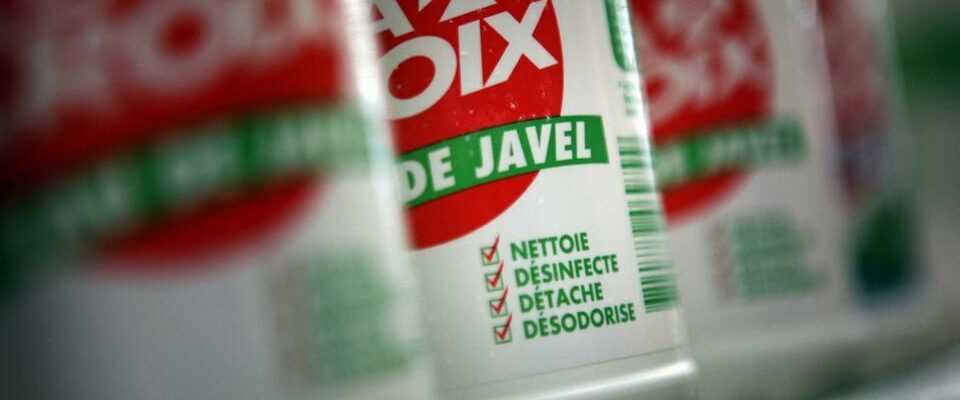If many maniacs and phobics of bacteria love it, bleach is not to be put on all surfaces. Here are the 10 surfaces to avoid.
Resulting from the mixture of chlorine and caustic soda, this very corrosive acid can be particularly harmful to health and the environment.
Note that bleach, devoid of surfactants (chemical compounds that clean by dissolving grease), therefore does not clean, and has no action on limestone, in which bacteria nest.
Yes, bleach whitens, but no more than sodium percarbonate.
Toys for children or animals
Toys, which children very often put in their mouths, should not be washed with bleach, which can be toxic or even fatal for the body. The same goes for anything that can be ingested by animals. Remember that you should not apply bleach to your animals at the risk of causing them serious burns.
Laundry
Of course, never put bleach on your clothes. Contrary to popular belief, the product will not whiten them at all, but will discolor or even yellow them.
Ceramics
Anything made of ceramic, such as dishes or vases, deteriorates when it comes into contact with bleach.
Food and the fridge
Bleach is dangerous for health, so it is obvious that it should not be used to wash fruits and vegetables, or your fridge, because it could end up on food. That is why in general it would be better to do without this substance in the kitchen. Prefer white vinegar which, in addition to disinfecting, deodorizes and is compatible with food use.
The cooking plates
Above all, do not apply bleach to your cooking plates, at the risk of damaging them considerably. To degrease and clean a hood or a hob, nothing beats black soap, a mixture of vegetable oil and highly concentrated potash lye, which exists in liquid or paste form. It is renowned for pickling the kitchen to perfection. Another safe bet: Marseille soap, also very effective for cleaning and degreasing.
A burnt pot or pan
When heated, bleach – in addition to becoming ineffective – releases gases that are particularly toxic to the respiratory tract. In addition to gnawing on the metal, it exposes you to risks when you use this pan again to prepare your food. Avoid putting it on all your kitchen utensils, especially if they are hot.
Toilet
In contact with urine, bleach turns into toxic gas. It is therefore strongly discouraged to use it to clean the toilet bowl.
The tiling
The seal of tile joints can be completely lost if bleach is applied to them. Better to use white vinegar, baking soda or lemon to whiten his blackened joints.
Wood
The best way to damage and weaken your wood (parquet, wooden deck or any other wooden object), and to make it porous and stained, is to apply bleach to it.
stainless steel
Aluminum and stainless steel do not mix well with bleach, which will leave marks and damage sinks. The principle is the same with metal which oxidizes and blackens after bleaching. You should therefore avoid using it to clean a stainless steel sink, as it is very aggressive.
Note that Blanc de Meudon is able to save tarnished silverware, while citric acid has the power to effectively attack rust. Because 100% natural and from the chalk quarries of the Paris basin (Meudon), Blanc de Meudon is a very fine white powder, weakly alkaline and a little abrasive, essentially containing particles of calcium carbonate.
